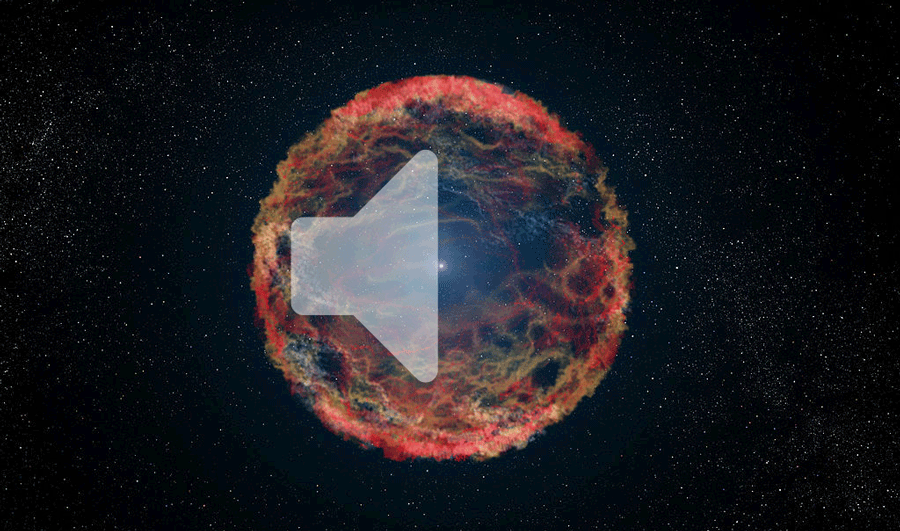BRIEF: Supernova Wannabe Dies With a Supersonic Quiver

Composite image by Yuen Yiu, source images by Dave Gandy (speaker icon) /NASA, ESA, and G. Bacon (Artist impression of supernova 1993J.)
(Inside Science) -- Giant stars several times the size of our own Sun tend to die a glorious death -- by exploding into a supernova so bright it can sometimes outshine an entire galaxy. After the brilliant last hurrah, the dying stars then collapse down to either an ultradense neutron star or the darkest object in the universe -- a black hole.
But scientists are less sure about the fate of stars that don’t quite make the cut for going supernova. Is it possible for a star to become a neutron star or a black hole without exploding in a spectacular fashion? Astrophysicists have speculated that it is, and are searching for ways to detect these less ostentatious celestial transformations. Now, a new theoretical model suggests stars that fail to go supernova may sing a different swan song.
Eric Coughlin, an astrophysicist from the University of California, Berkeley, presented the new model at the American Astronomical Society meeting in National Harbor, Maryland, earlier this month. According to the model, the core collapse of giant stars launches a sound wave from the inner regions -- even in cases where a supernova does not occur. The wave then propagates upward, erupting from the surface as a supersonic shockwave that briefly increases the star's brightness. These predictions could guide future efforts to observe and understand the many different ways a star can die.

